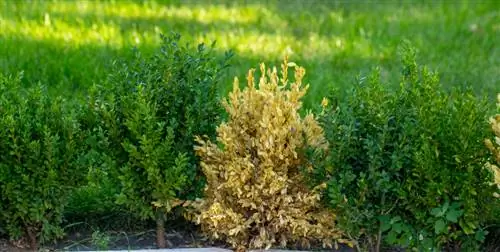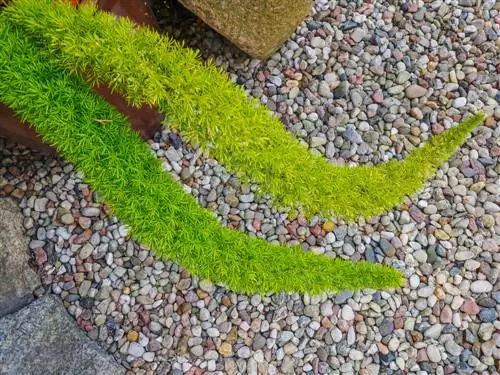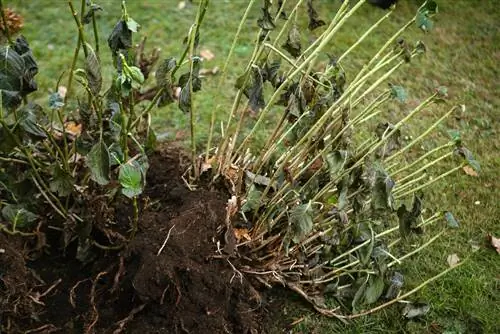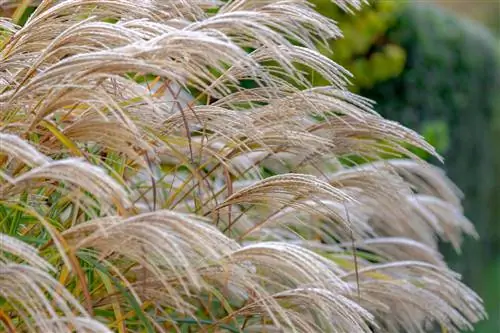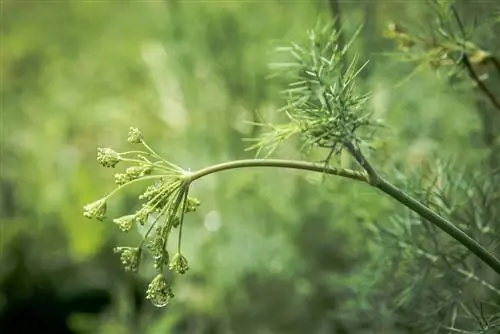- Author admin [email protected].
- Public 2023-12-16 16:46.
- Last modified 2025-01-23 11:21.
The boxwood often reacts quite offended when it is transplanted. The leaves turning yellow after such a measure is a sign that the absorption of moisture and nutrients is impaired. However, this problem can be managed with appropriate measures.
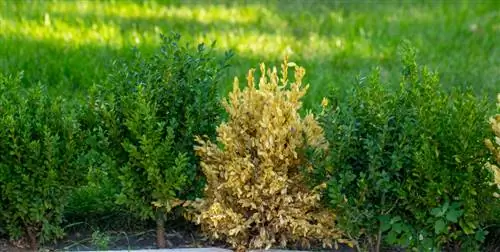
Why does a boxwood turn yellow after transplanting?
If a boxwood has yellow leaves after transplanting, this is usually due to damaged roots that make it difficult to absorb water and nutrients. To save the plant, you should cut it back severely to restore the balance between roots and above-ground parts.
Water or nutrient deficiency is the cause of yellowing
In most cases, yellow leaves on boxwood are an indication that the plant cannot absorb enough water or nutrients. The reason for this is that the roots were damaged during the transplanting process and are now no longer able to absorb enough plants. However, with the right care, they can recover and grow quickly, so that the above-ground parts of the plant can also be cared for as usual.
How to save the discolored boxwood
However, the yellow parts of the plant will not turn green again, which is why you should cut the plant back heavily. This step should be done in autumn so that the box can sprout again the following spring. In any case, heavy pruning during the relocation process makes sense in order to compensate for the loss of roots. Eventually the leaves turn yellow because the reduced roots can no longer supply all parts of the plant above ground. In short: If you cut off the roots, you also have to cut back the rest of the plant. This way the balance is maintained.
You should pay attention to this when moving the boxwood
Yellow discoloration can also be avoided by taking the following measures when transplanting the boxwood:
- If possible, transplant the plant in March or September.
- Prepare transplanting carefully.
- About two weeks before the appointment, you should cut off the roots with a spade.
- To do this, dig a shallow trench around the box.
- Its diameter should correspond to the height of the bush.
- Then water the box thoroughly and let it rest for at least two weeks.
- During this time, a compact root ball with new fine roots develops.
- Water the boxwood more during this time.
- Replace it when the time is up.
- The new planting hole should be about twice as large as the root ball.
- Enrich the excavation with compost, horn shavings and primary rock powder (€17.00 on Amazon).
- Don’t forget to prune.
- Make sure you have a good water supply afterwards.
Tip
If the leaves turn brown after transplanting (and otherwise), there is usually a fungal disease behind it.

